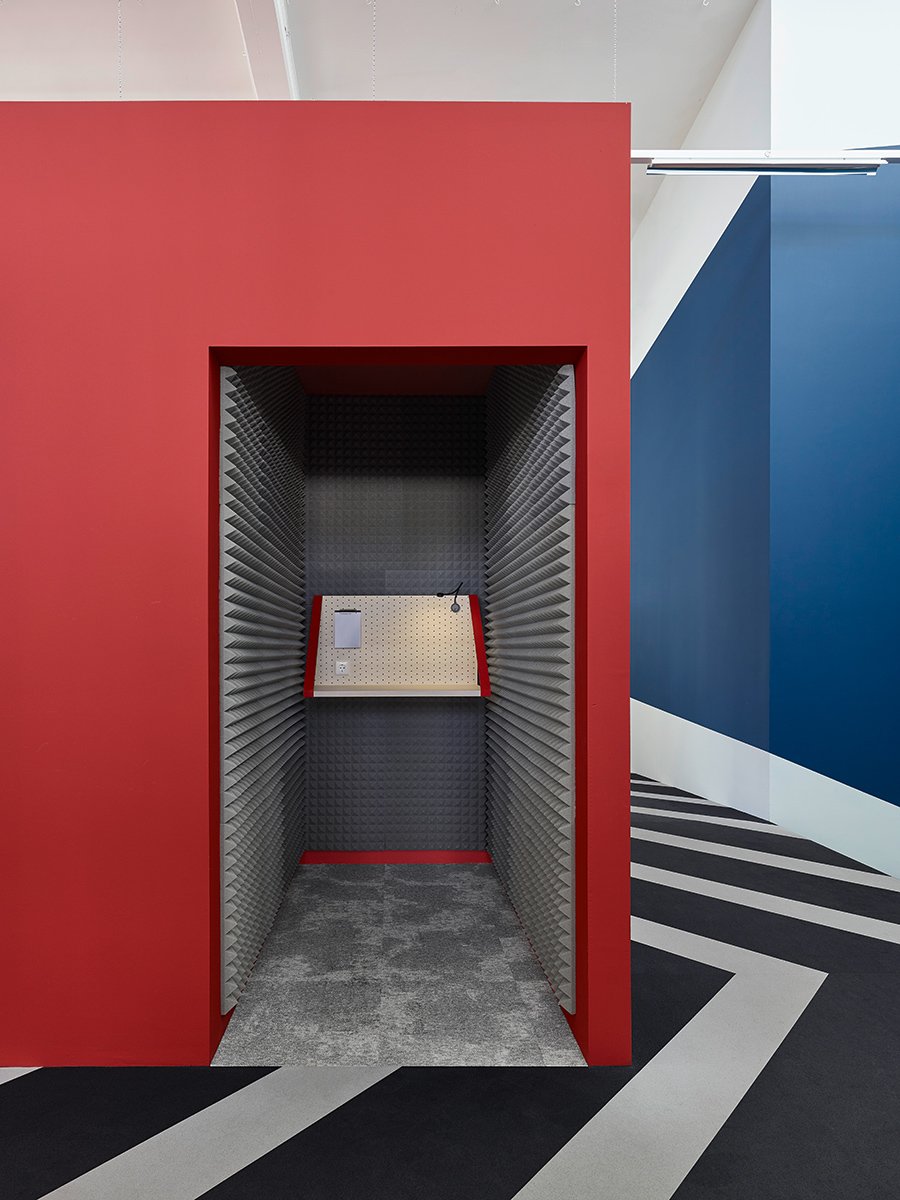
November 1, 2018
Alexander Fehre Designs a Surreal, Postmodern-Inflected Office in Germany
The Stuttgart, Germany–based interior architect combined vibrantly painted furniture, ample applications of zinc and wood, and bold black-and-white zigzags.

Alexander Fehre, a Stuttgart, Germany–based interior architect, has earned a reputation among his commercial clients for pairing modern, adamantine material palettes with navigable open-plan layouts. A 2014 design for the offices of a conveyor-belt company near Stuttgart, for example, made clever use of aluminum mesh panels to delineate spaces and echo the industrial context.
Fehre’s more recent design for the auto-part supplier Bosch exhibits a similar spirit. Wrapped up in 2017 and located on a tucked-away wooded road in Schwäbisch Gmünd in Germany’s automobile-manufacturing heartland, the new offices aim to engender collaboration and innovation while providing flexibility and responsiveness—with a strong visual punch.
The client requested an aesthetically striking workplace, and the nearly 35,000-square-foot space is just that: Its eclectic combination of materials, surfaces, and colors delivers a surreal, postmodern feel. Housed in a sprawling former production hall, it articulates zones through design elements like vibrantly painted furniture, ample applications of zinc and raw wood, and full-size trees that seem to hover in the corporate ether.

Along the floor, Fehre painted bold black-and-white zigzags that recall the dream sequences in Twin Peaks. “The graphic shapes are intended to break up the large walls and give the space a modern feel and lively atmosphere,” Fehre tells Metropolis.
The industrial (and automotive) nature of Bosch’s line of work not only informed some unorthodox material choices—such as rubber flooring laid out like streets, or traffic barriers that flank conference islands—but guided the spatial organization of the entire office. A central “roadway” and adjoining bends and turn-offs unify the open plan, while different colors mark collaboration areas or single-focus alcoves, also creating diverse, characterful workspaces. “Some people will dislike the color they are in,” Fehre says, “and some of them will love it.”
He describes the design as thorough and iterative—“like a small city planning”—and this organizational complexity manifests in the project’s freneticism. “I think you’ll find modern, postmodern, as well as a ‘zeitgeist’ design in it,” Fehre reflects, adding that off-site Bosch employees, as well as its upper management, curiously and frequently poke their heads inside. “It’s intensively in use, and the workplaces look like a creative chaos,” he sums up. “But that was exactly the intention.”
You may also enjoy “Will the Culture of Good Taste Devour McDonald’s?“

















